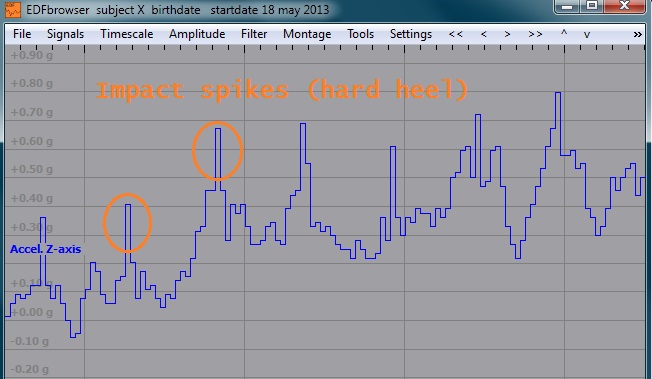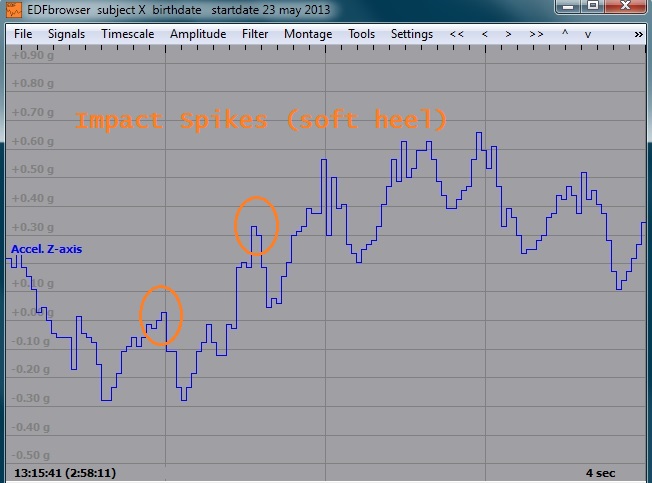Most of the fitness and sporting gadgets with accelerometer (G-sensor) built-in can give you nice scores on pedometer (number of steps taken), and some activity level measure ("fuel"). However, by NOT providing the users the opportunity to access and view the raw sensor data, greater opportunity to further help the user is often lost.
One key issue faced by most walker, jogger, runner: is my gait correct, smooth, or actually hurtful? Do I have the right cushioning for the ground impact with my unique gait and foot angle and position? The resulting impact-force can be drastically different, which naturally propagates along spine to "shake" the neck and head, causing unnecessary strain and possible injury if not corrected.
For a posture sensor worn on head (best for detecting correct posture, as well as possible neck strain), the accelerometer Raw data can tell us a great deal. And "a step is not just a step; one step can be very different from another step" as measured by any of those fitness gadgets. Here, we illustrate the recorded Accelerometer Z-axis (measuring head forward-backward tilt) during normal walking gait, comparing wearing hard heel vs. soft heel shoes. The impact G-forces and resulting strains, as propagated through spine to the head, are very different. Not shown here, but you should experiment for yourself, are different effects from, landing on heel, palm, toes, or smooth rolling from heel to toes.


